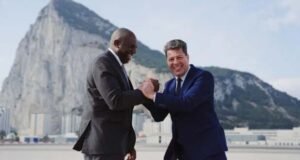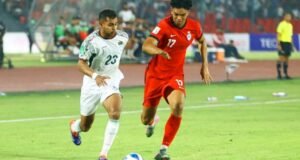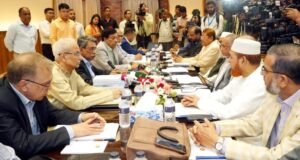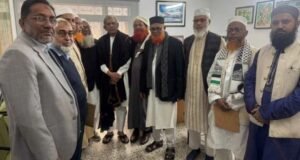 Under a twinkling chandelier in a gilded room at the Irish embassy in London, Binti Ali Kiza walked slowly to the podium. She looked nervous and cold, despite the blanket over her shoulders and the woollen cap on her head, but her voice was firm as she said: “This is the voice of a grassroots woman.”
Under a twinkling chandelier in a gilded room at the Irish embassy in London, Binti Ali Kiza walked slowly to the podium. She looked nervous and cold, despite the blanket over her shoulders and the woollen cap on her head, but her voice was firm as she said: “This is the voice of a grassroots woman.”
The Kenyan activist had flown from her home on the humid Indian Ocean coast to take part in a Women in Power event organised by UN Women and VSO to celebrate International Women’s Day.
As world leaders debate what to include in the Sustainable Development Goals(SDGs) that will define the global agenda for the next 15 years, there is much talk about the need for gender parity. There is much talk about giving women like Kiza a voice in global decision-making.
But if talk is cheap, then the actual support given to women’s groups, like Kiza’sSauti Ya Wanawake (the Voice of Women), seems cheaper still.
Binti Ali Kiza at the Irish embassy speaking at Women in Power, 5 March 2014. Photograph: theguardian.com
Kiza has been an activist for 15 years, working with local communities to encourage women to fight for their rights and helping victims of gender-based violence.
“We have faced many challenges,” she told the ambassadors, NGO heads and young volunteers in London. “Those who don’t accept what I am doing say I am a home-breaker, I don’t respect our culture, or ‘Who are you to speak to a man?’
“I have to stay in my office all day and there is no furniture or fans. I have been left with no money to feed my family … When women have nowhere to go they stay in my house,” she said.
Tracking humanitarian funding for gender equality and women’s rights programmes is difficult – the markers that exist only capture some of the data. Campaigners say this information gap hinders the development of efficient policies, exacerbates coordination problems, and sidelines women’s groups.
Advertisement
Jessica Cruse, a 25-year-old volunteer with the International Citizen Servicewho worked with VSO on a sexual and reproductive health project in Zambia, has seen this lack of funding firsthand.
“There were times when … the local organisation just ran out of funding,” she said, noting that local directors often paid for activities out of their own pockets. Cruse said a lack of trust, sparked by reports of corruption, sometimes scared donors off.
“All organisations are painted with the same brush, but grassroots organisations have the expertise and the local knowledge. Yet nobody is investing in them monetarily … it’s a true shame and it’s counterproductive,” she said.
This anecdotal evidence is mirrored in more empirical studies.
Emily Esplen, lead policy analyst on gender equality and women’s rights at the OECD’s Development Co-operation Directorate, conducted a study on funding to gender equality in fragile contexts and found only 1% of gender equality-focused aid to fragile states in 2012-13 was channelled to women’s groups.
“There is not enough support, financial or other, for women’s organisations that are often doing fantastic stuff at the grassroots level with very little support ,” she said.
Angela Salt, the director of VSO in the UK speaking at Women in Power, 5 March 2014.Photograph: theguardian.com
Angela Salt, the director of VSO in the UK, said women often used funds more effectively and had different priorities from men.
“Women are often the ones who have to go and get the water. They are going to think differently about how close the well is. Women are often the ones that do healthcare and childcare, so when it comes to setting the district budget or regional budget, they are going to prioritise the funding of healthcare more, perhaps, than their male counterparts,” she said.
Nicky McIntyre, executive director of international women’s fund Mama Cash, said growing awareness of the importance of investing in women and girls was positive.
“But we are really clear that it hasn’t translated into funding, at least for the organisations we are supporting,” she said. Mama Cash provides grants to around 100 groups led by women, girls and trans people, using funds raised from individuals, corporations, foundations and governments.
In a 2013 report, the Association for Women’s Rights in Development (AWID) put the total funding for a sample of 740 women’s organisations at just $106m (£70.4m), a fraction of the budgets of the largest international NGOs.
In a separate study, AWID found that from 2005-2020, $14.6bn (£9.7bn) had been pledged by the corporate sector and other new actors for investing in women and girls. However of the 170 initiatives mapped, only 27% engaged women’s organisations as partners, and only 9% directly funded them.
Most of the money went to larger international NGOs, that might subcontract to smaller groups but mainly to implement their own priorities, McIntyre said.
“This signals a lost opportunity to connect with, and benefit from, the history, diverse experiences, and insights of women’s organisations that have been doing related work around the world for decades. At the same time, there is a parallel trend of increasing mistrust in the NGO sector,” the report said.
McIntyre said women’s groups also lost out because of an inherent bias against women handling large sums of money or because these organisations were not on the radar of big international donors or NGOs.
“Because smaller women’s groups have smaller budgets, and a limited capacity, they are not going to be able to access these larger funds, they will continue to be bypassed,” she said.
“Unless we address that barrier … we are going to keep hearing about these big pots of money but they are not reaching these groups. They are stopping with international NGOs,” she said.
McIntyre said that there were some positive initiatives such as the Dutch government’s Funding Leadership and Opportunities for Women (FLOW) fund, which has a budget of €80m (£57m) for 2012-2015 for women’s organisations in the global south.
“I do see a growing cadre coming to the table, a growing buy-in and a greater willingness to do more core support, more flexible support, and that is getting traction,” McIntyre said.
While rhetoric clearly does not translate directly into dollars, VSO’s Salt said a standalone goal on gender equality and women’s rights must be included in the SDGs because the new targets would dictate “emphasis, importance and funding”.
“It’s absolutely key that we try to get gender equality and women’s rights separately and appropriately treated,” she said.
“There is a fragile consensus on it now, but it certainly is fragile and that’s why we and other organisations are making sure we don’t lose a day between now and September to press the world as a global community to understand … the need for gender equality.”
Kiza just wants to continue her work, which, as a mother of two young men and a teenage daughter, starts very much in the home. She takes her sons – aged 25 and 18 – to her meetings so that they can see what she has to say.
“I want support so that I can reach out to the grassroots women in the villages,” she said. “If we do not support women, gender-based violence can’t be finished. It is like a circle of violence. It’s going round and round and round. But if we educate the women and train them, it can be reduced.”
 Weekly Bangla Mirror | Bangla Mirror, Bangladeshi news in UK, bangla mirror news
Weekly Bangla Mirror | Bangla Mirror, Bangladeshi news in UK, bangla mirror news






